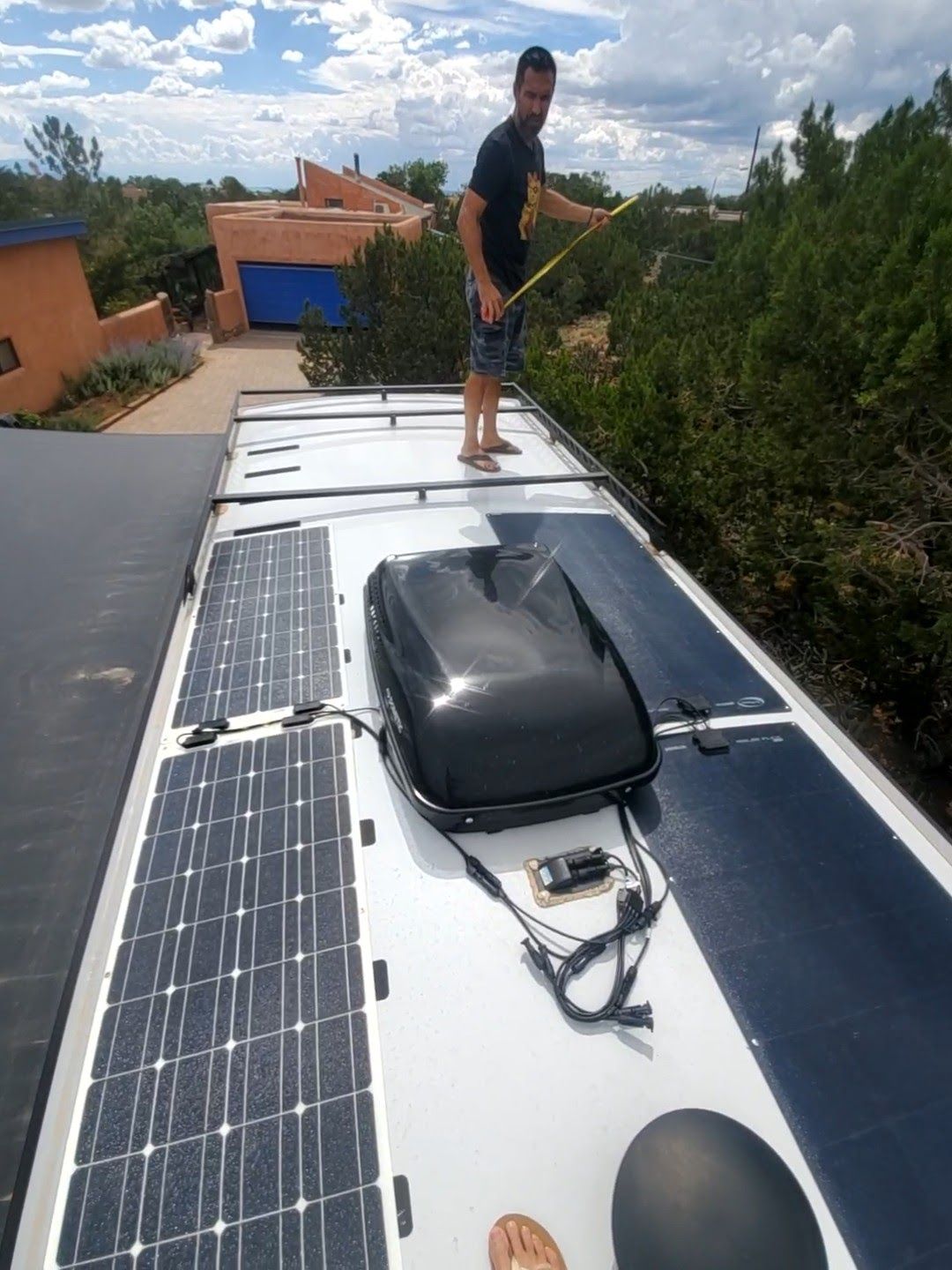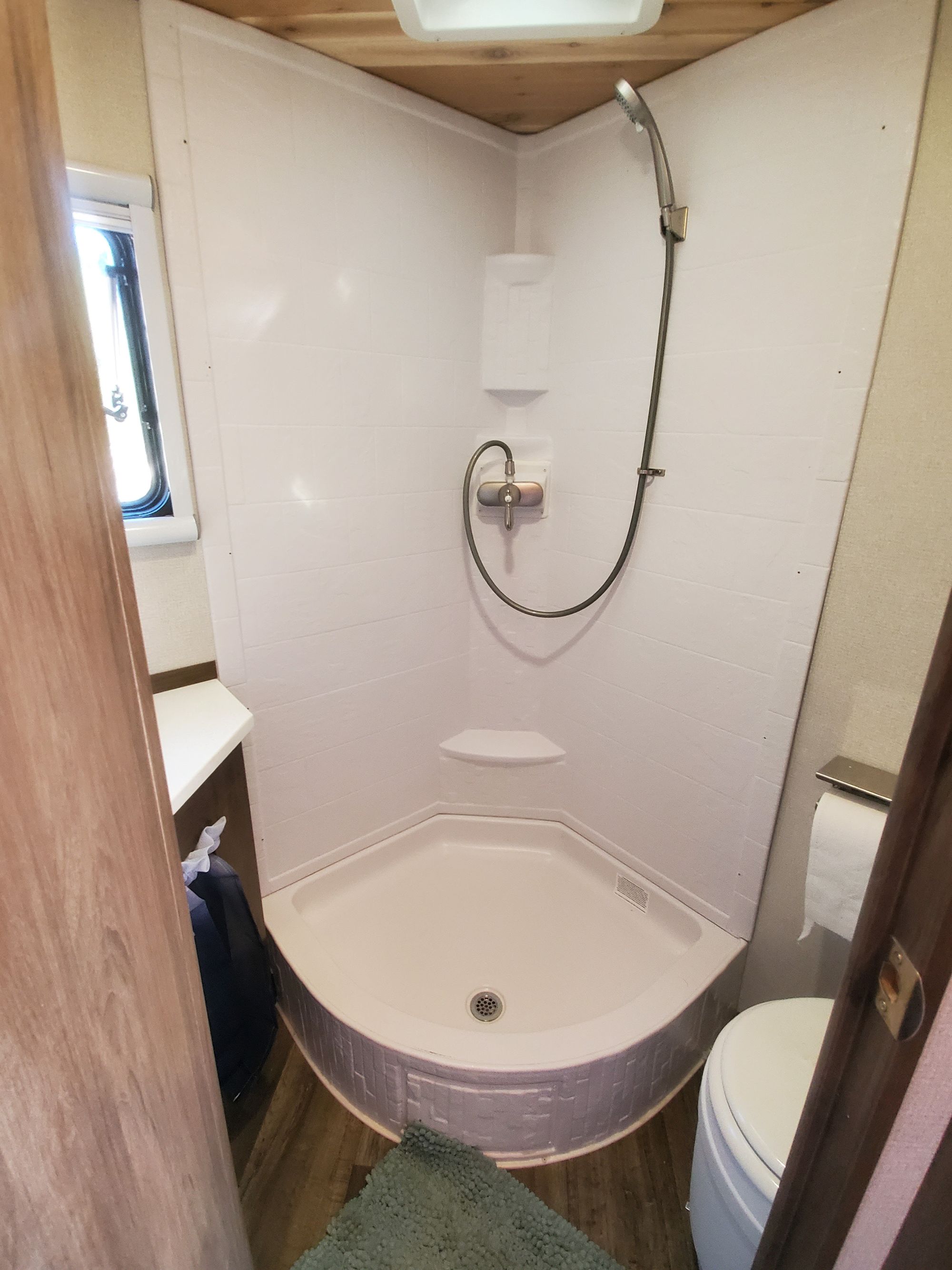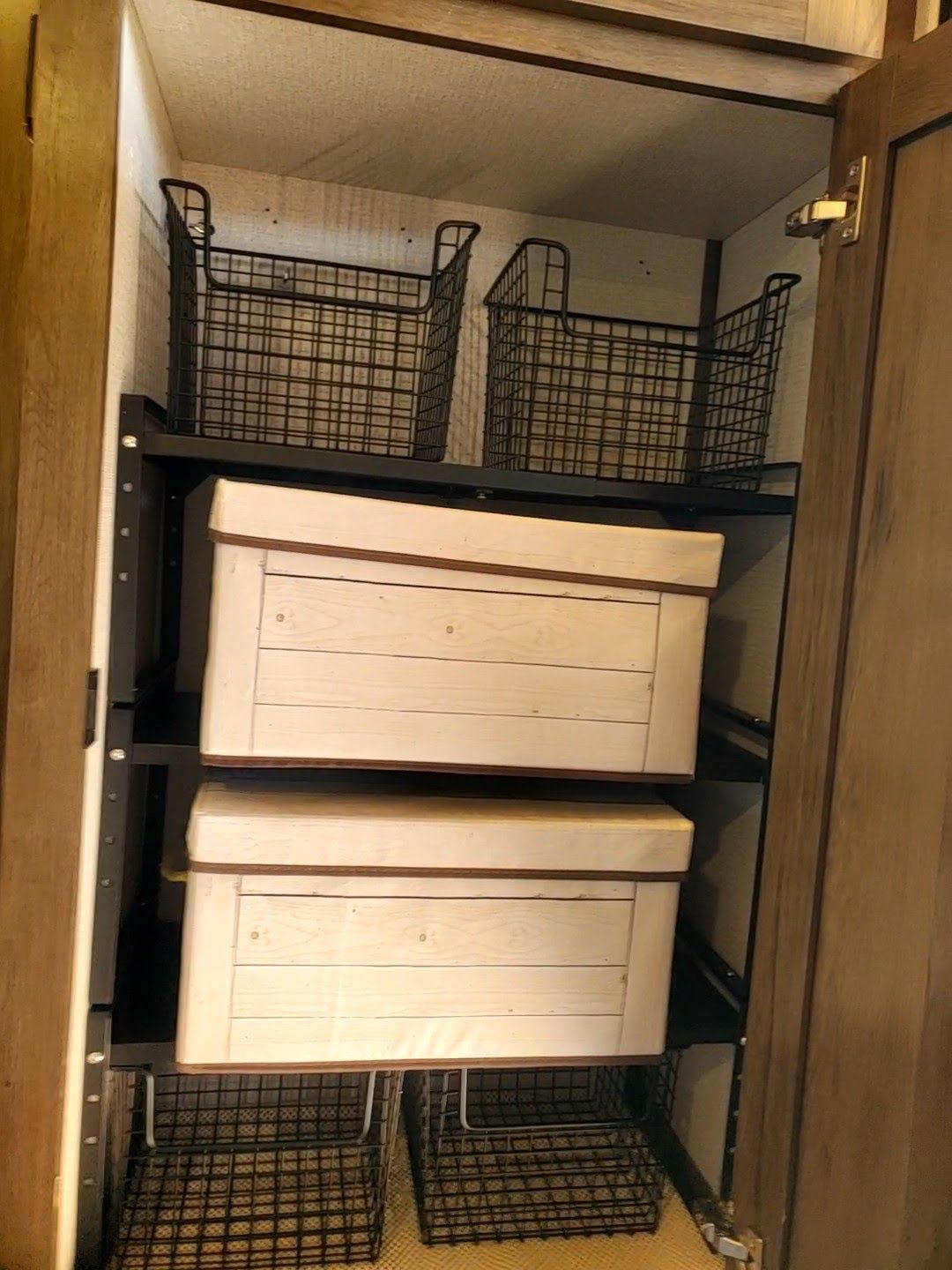Trailer info
Let us explain a bit of our thought process behind picking the Imperial Outdoors XploreRV X22. We wanted a very rugged build to withstand rough roads in the Baja peninsula and beyond. We also felt that navigating essentially all four seasons to the end of South America would require a fully insulated trailer without your water lines freezing, and this is hands down the best insualted trailer on the U.S. market good to -40 fahrenheit. That also works in reverse, keeping you cool inside and the heat outside for hot climates, the bulk of our journey. We also didn't feel great about pop-up trailers since we will be living in it full time (more parts likely to break or fail as well). Other major aspects we liked are the full time bed, we designed window shade and screen features, substantial storage below and above, the dry shower, dry flush toilet (no black tank), generous sink and kitchen, and humongous fridge and freezer.

What we've changed
The stock flexible solar panels (2x190 watts) left a lot to be desired. In research and real work experience despite the marketing, flexible panels don't perform as well as the larger thicker rigid panels. We added 2x100 watt Renogy panels, and due to space restrictions, another 2x160 watt flexible Renogy panels. The rigid panels took some work to get mounted, the only space available was on a the aft portion that has a roof rack. Looking on Youtube, I found people that use metal angle pieces that are essentially 1"x1" 90 degree bended metal with holes that easily bolted down onto the stock roof rack after drilling small pilot holds. Then the solar panels easily screw right into the metal angle "railing". Before doing all that a metal enamel flat black spray paint job was done to jive better with the existing roof rack and not be so shiny and out of place. After research it seemed most efficient to hook identical panels in series, and wiring the differnt pairs in parallel. I added a 4 to 1 MC4 junction, leaving a spare pair for future use or a portable setup if needed. While fairly substantial, the two 250ah LifePO4 batteries didn't leave us with enough headroom if we wanted to use the AC offgrid, so they were replaced with identical dimension batteries from reBel, for a new total of 800ah's of capacity. The included solar charger unit from GP Electric was only able to handle a lower wattage and maxed at 30amps output, so we replaced that with a Renogy Rover 60amp unit . These changes so far give us plenty of power and we replenish fully most days unless we use a lot of AC or it's a super cloudy day.


The Xplore X22 has a realy nice glass shower that is a semi circle sliding design, however many owners opt to delete the glass shower for a rod and curtain design, opening up a ton of room both when showering and general use. We went this route as well in order to save some weight and create more space.

Things we have fixed/added or replaced so far
There were some things very common in the beggining to owning a new RV, like very minor water leaks that needed a few connections tightened. The water pump did fail after a few months of use and was always slow to prime, a known issue that the manufacturer rectified quickly with a replacment. We will have a spare in the parts inventory before heading south. I also didn't realize the bus bar system is fused, so the 30amp fuse for the previous solar charger blew once the Renogy system surpased that amperage.
A lot of research was done finding suitable dimensions of bins/boxes/organizers to make the best use of all the cabinets and even the fridge. We did mount some magnetic knife holders to secure metal spice racks for use when stationary, and added a utensil holder. Some stick on mirrors add personality and depth to the interior. The stock 8" mattress was not comfortable, but acted as a great base to add a 3" gel memory foam topper completely transforming the sleep experience.



We did want to bring our moutain bikes with us but wanted to minimize extending the overall length and opted against a hitch mounted bike rack. We instead used a Yakima SpareRide rack that goes over one of the spare tires mounted on the back, so it's up higher and doesn't stick out as far. We also removed a second spare tire that came with the trailer to save weight, these are burly mud terrain tires and 1 should be pleny with a tire patch kit.
Connectivity
Important for remote work is being connected to the internet. Our desire to be able to overland and stay in very remote areas required us to get a Starlink for RV system. So far it has been indispensible and it gives us plenty of bandwidth for work and streaming. As a backup that requires less setup but piggy backs off of most latin american celluar providers we have the Solis Wifi hotspot that utilizes a virtual sim technology.